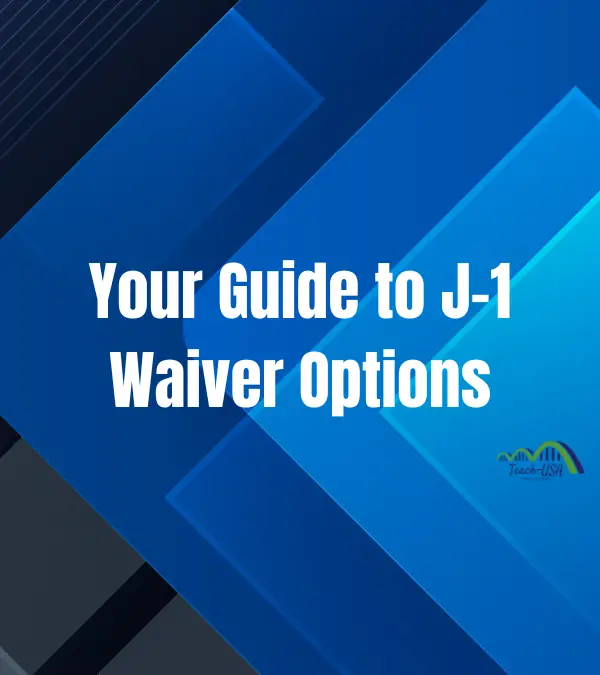Not all J-1 teachers are required to return home—if you qualify for a waiver, your U.S. journey might continue. But the J-1 waiver process can feel confusing, especially with so many options.
This post breaks down each type of J-1 waiver in simple terms, so you can make the best decision based on your personal story.
What Is a J-1 Waiver?
If your J-1 visa is subject to the two-year home residency rule (212(e)), you’re required to return to your home country for at least 2 years after your program ends.
A J-1 waiver allows you to stay in the U.S. legally—without fulfilling that 2-year requirement—if you meet certain conditions.
⚠️ Important Disclaimer
Before anything else:
Many teachers sign an agreement with their J-1 sponsor stating that they are not allowed to apply for a waiver during the program period. Violating this may result in:
- Non-renewal of your contract
- Termination of your visa
- Future ineligibility for other programs
✅ Check your sponsor agreement first before doing anything. Some waivers are only allowed after the program ends or with your sponsor’s written approval.
When in doubt, consult a qualified immigration attorney who understands J-1 teacher cases.
The 5 Types of J-1 Waivers (Explained for Teachers)
1. No Objection Statement (NOS)
Best for: Teachers whose program is not funded by a government agency.
Your home country’s embassy tells the U.S. they don’t mind if you don’t go home for two years.
It is not allowed if you were sponsored by DepEd, CHED, or any government-funded agency.
📌 Usually the easiest waiver—if you qualify.
2. Hardship Waiver
Best for: Teachers with a U.S. citizen or permanent resident spouse or child who would suffer if you returned home.
Requires proof of:
- Emotional hardship
- Financial struggles
- Medical or educational issues
This is a story-driven waiver—strong documentation and legal support are essential.
3. Persecution Waiver
Best for: Teachers who would face persecution in their home country due to race, religion, or political opinion.
This is not about financial stress or career hardship.
This waiver is serious and requires clear, documented risk and usually legal help.
4. Interested Government Agency (IGA) Waive
Best for: Teachers working in public or high-need U.S. schools.
If a U.S. government agency (like the Department of Education) believes your continued stay is in the national interest, they can support your waiver.
📝 Needs coordination, legal expertise, and strong employer backing.
5. Conrad 30 Waiver
Note: This is for physicians, not teachers.
Doctors can get a waiver if they work in underserved areas in the U.S. for at least 3 years.
Included here only for awareness—teachers are not eligible for this waiver.
Which One Fits Your Story?
Ask yourself:
- Was your program privately funded? → Try No Objection.
- Do you have a U.S. citizen child or spouse? → Consider Hardship.
- Are you at risk if you return home? → Look into Persecution.
- Does your school need you long-term? → Explore the IGA waiver.
✅ Final Tips
- Always check your sponsor agreement first.
- Don’t start any waiver without understanding the risks.
- Talk to an immigration lawyer to find out what’s possible in your case.
Related post: All About Securing a Waiver

